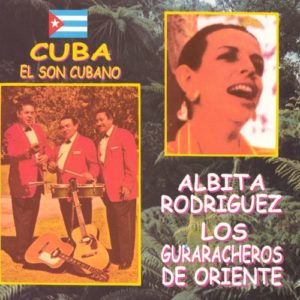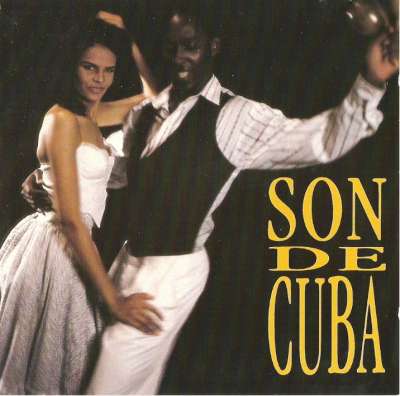CUBAN MUSICAL GENRE ” EL SÓN”…’FOR THE SOUL TO ENJOY’…”.
The “Són” is a vocal genre, instrumental dance, which constitutes one of the basic forms within Cuban music, presenting in its structure elements from the African (Bantú) and Spanish, but already fused in the Cuban, L rhythmic turns, choruses, percussive modes, intonations and sonorities of the pulsed strings denouncing their two original sources.
It is danced by a linked couple, and to produce its music a wide instrumental range is used that can go from a simple three or guitar, sometimes accompanied by marimbuela, güiro and bongó, to bigger groups and complex.
According to Odilio Urfé son is the most syncretic sound exponent of national cultural identity […] its verified existence begins concretely in the late nineteenth century, in a multiple zonal location comprising the suburbs of some Eastern cities such as Guantánamo (With the Changüí), Baracoa (place where according to Sindo Garay, originated the Cuban three), Manzanillo (with its organera base) and Santiago de Cuba with its folkloric suburban emplacements.
By its extraction, development, sound and choreographic characteristics and its social use, the Cuban son became historically the most suitable and representative medium for the humble layers of the socio-economic-political structure of Cuba in the first post-war period
Classical authors such as Bienvenido Julián Gutiérrez, Ignacio Piñeiro and Arsenio Rodríguez, and interpreters such as trumpeter Felix Chapotín and the great singer Benny Moré, are decisive figures in a progressive development that encompassed almost all the Cuban musical strata and that influenced -influye- In no little of the production of diverse zones of the world “.
On the structure of the son wrote Eliseo Grenet: “consists in the repetition of a refrain of no more than four bars originally called montuno, which is sung to choir, and a contrast motif for a voice only that not only pass from the eights “.
Initially the groups of son were formed by guitar, three, bongó, botija or marimbuela (soon under), keys and maracas; Then one – or more – trumpets was added.
In summary it can be said that in the instrumental complex of the son (sextet or septet) there is evidence of a constant and contrasting juxtaposition of three independent rhythmic bands in dynamic projection.
The first line (syncopated) occurs as the predicted bass.
The second is integrated by the accompanying guitar, maracas and bongó (the latter in the first part of the son, since in the refrain the bongó leaves its constant rhythm -martillo- and moves in variations and free rhythmic improvisations) .
Both strips already mentioned are conditioned and submitted to the bicompasado metric module of the touch of keys. ”
The presence of this Cuban genre is important – and growing – on a universal scale, within the most authentic and valuable musical expressions of today.
And as the song says, “Son is the most sublime thing for the soul to have fun, it should die who does not like it.”
GÉNERO MUSICAL CUBANO “EL SÓN” …’PARA EL ALMA DIVERTÍR..’
El “Son” es un género vocal, instrumental bailable, que constituye una de las formas básicas dentro de la música cubana, presentando en su estructura elementos procedentes de las músicas africanas (Bantú) y españolas, pero ya fundidos en lo cubano, confluyendo en l giros rítmicos, estribillos, modos percutivos, entonaciones y sonoridades de las cuerdas pulsadas que denuncian sus dos fuentes originarias.
Se baila por pareja enlazada, y para producir su música se emplea una amplia gama instrumental que puede ir de un simple tres o guitarra, a veces acompañado de marimbuela, güiro y bongó, hasta grupos más grandes y complejo.
Según Odilio Urfé el son es el exponente sonoro más sincrético de la identidad cultural nacional […] su existencia verificada comienza concretamente en las postrimerías del siglo XIX, en una ubicación zonal múltiple que comprende los suburbios montuneros de algunas ciudades orientales, como Guantánamo (con el Changüí), Baracoa (lugar donde según Sindo Garay, se originó el tres cubano), Manzanillo (con su base organera) y Santiago de Cuba con sus barrios folklóricos de emplazamientos sub-urbanos.
https://youtu.be/3dLy2uOgLj4
Por su extracción, desarrollo, características sonoras y coreográficas y su uso social, el son cubano devino históricamente como el medio de expresión más idóneo y representativo para las capas humildes de la estructura socio-económica-política de la Cuba de la primera post-guerra
Autores clásicos del género como Bienvenido Julián Gutiérrez, Ignacio Piñeiro y Arsenio Rodríguez, e interpretes como el trompetista Félix Chapotín y el genial cantante Benny Moré, son figuras determinantes en un desarrollo progresivo que abarcó casi todos los estratos musicales cubanos y que influí -influye- en no poca de la producción de diversas zonas del mundo “.
Sobre la estructura del son escribió Eliseo Grenet : “consiste en la repetición de un estribillo de no mas de cuatro compases originalmente llamado montuno, que se canta a coro, y un motivo de contraste para una voz a solo que no sola pasar de los ochos “.
Inicialmente los grupos de son estaban formados por guitarra, tres, bongó, botija o marimbuela (luego bajo), claves y maracas; después se le agregó una – o ms – trompetas.
https://youtu.be/7MuGU0l7rXQ
En resumen puede decirse que en el complejo instrumental del son (sexteto o septeto) se evidencia una constante y contrastante yuxtaposición de tres franjas rítmicas independientes en proyección dinámica.
La primera línea (sincopada) ocurre cono el bajo previsto.
La segunda la integra a un tiempo la guitarra acompañante, las maracas y el bongó (este último en la primera parte del son, ya que en el estribillo el bongó abandona su ritmo constante -martillo- y se desplaza en variaciones e improvisaciones rítmicas libres).

Ambas franjas ya referidas se acondicionan y someten al módulo métrico bicompasado del toque de claves. ”
La presencia de este género cubano es importante – y creciente -, a escala universal, dentro de las expresiones musicales mas auténticas y valiosas de hoy.
Y como dice la canción “el Son es lo mas sublime para el alma divertir, se deveria de morir quien asi no lo estime”..
Agencies/CubanMusic/HelioOrovio/Internet Photos/YouTube/ Arnoldo Varona/ thecubanhistory.com
THE CUBAN HISTORY, HOLLYWOOD.







